In the quest for healthier cooking, choosing the right frying pan is crucial. With various options available on the market, it can be challenging to determine which one is truly beneficial for your health. In this comprehensive guide, we’ll delve into the characteristics of different types of frying pans and their impact on your well-being. From traditional cast iron to modern ceramic coatings, we’ll explore the pros and cons of each, helping you make an informed decision for your kitchen.
Understanding the Health Concerns

Chemical Coatings
Many nonstick frying pans are coated with per- and polyfluorinated substances (PFAS), including polytetrafluoroethylene (PTFE), commonly known as Teflon. These chemicals are engineered to provide a slick surface that prevents food from sticking, making cooking and cleaning easier. However, the manufacturing and use of PFAS have raised significant health concerns:
Health Risks:
- Cancer: Several studies have linked PFAS exposure to an increased risk of certain cancers, including kidney, testicular, and pancreatic cancer. Prolonged exposure to these chemicals through cookware can contribute to this risk.
- Reproductive and Developmental Issues: PFAS exposure has been associated with adverse effects on reproductive health and fetal development. Pregnant women, in particular, may be at risk of complications due to exposure to these chemicals.
- Environmental Impact: PFAS are persistent chemicals that do not break down easily in the environment. They can accumulate in soil, water, and wildlife, posing long-term risks to ecosystems and human health.
Heavy Metals
In addition to chemical coatings, some frying pans may contain heavy metals such as lead, cadmium, and mercury. These metals can leach into food during cooking, particularly when pans are subjected to high temperatures or acidic ingredients. The presence of heavy metals in cookware raises several health concerns:
Health Risks:
- Lead Poisoning: Exposure to lead can lead to a range of health issues, including neurological damage, developmental delays, and behavioral problems. Children and pregnant women are especially vulnerable to the effects of lead poisoning.
- Cadmium Toxicity: Cadmium exposure has been linked to kidney damage, bone disorders, and certain types of cancer. Long-term exposure to low levels of cadmium, such as those found in contaminated cookware, can pose significant health risks.
- Mercury Exposure: While less common in cookware, mercury exposure can still occur if pans are made with contaminated materials. Mercury toxicity can affect the nervous system, leading to symptoms such as tremors, memory loss, and muscle weakness.
Mitigating Health Risks
To mitigate the health risks associated with frying pans, it’s essential to choose cookware made from safe and non-toxic materials. Opting for alternatives to traditional nonstick coatings, such as ceramic or seasoned cast iron, can reduce exposure to harmful chemicals and heavy metals. Additionally, practicing proper cooking techniques, such as using low to medium heat and avoiding abrasive cleaning methods, can help minimize the release of toxins from cookware into food.
Evaluating Frying Pan Options
When considering which frying pan is best for your health, it’s crucial to thoroughly evaluate the various options available. Each type of frying pan comes with its own set of advantages and disadvantages, which can impact both cooking performance and safety. Let’s explore these factors in more depth:
Cast Iron
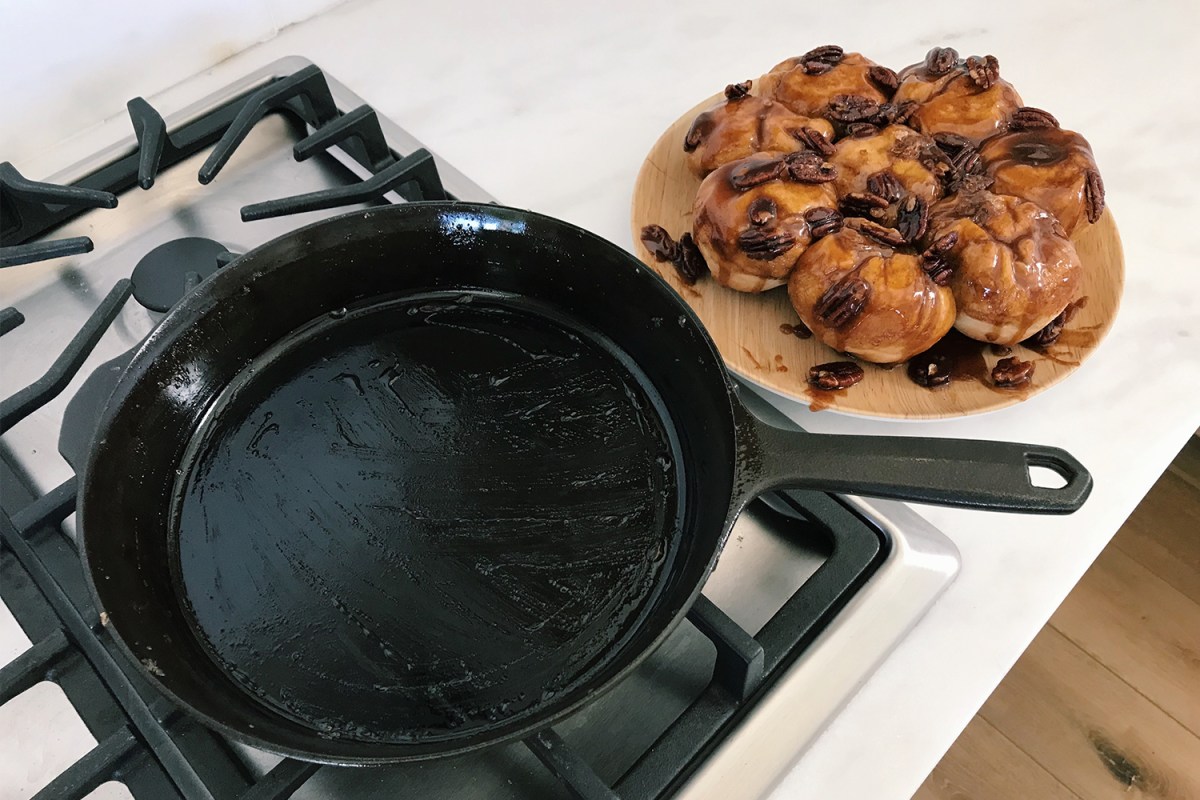
Pros:
- Durability: Cast iron frying pans are known for their durability and longevity. With proper care and maintenance, they can last for generations.
- Natural Nonstick Properties: When seasoned correctly, cast iron develops a natural nonstick surface, making it easy to cook with minimal oil or fat.
- Heat Retention: Cast iron retains heat exceptionally well, ensuring even cooking and browning of food.
Cons:
- Requires Seasoning: Cast iron pans need to be seasoned regularly to maintain their nonstick properties and prevent rusting.
- Heavy: Cast iron pans can be heavy and cumbersome to handle, especially when filled with food.
- Reactivity: Acidic foods, such as tomatoes or vinegar-based sauces, can react with the iron in cast iron pans, altering the flavor and appearance of the dish.
Stainless Steel
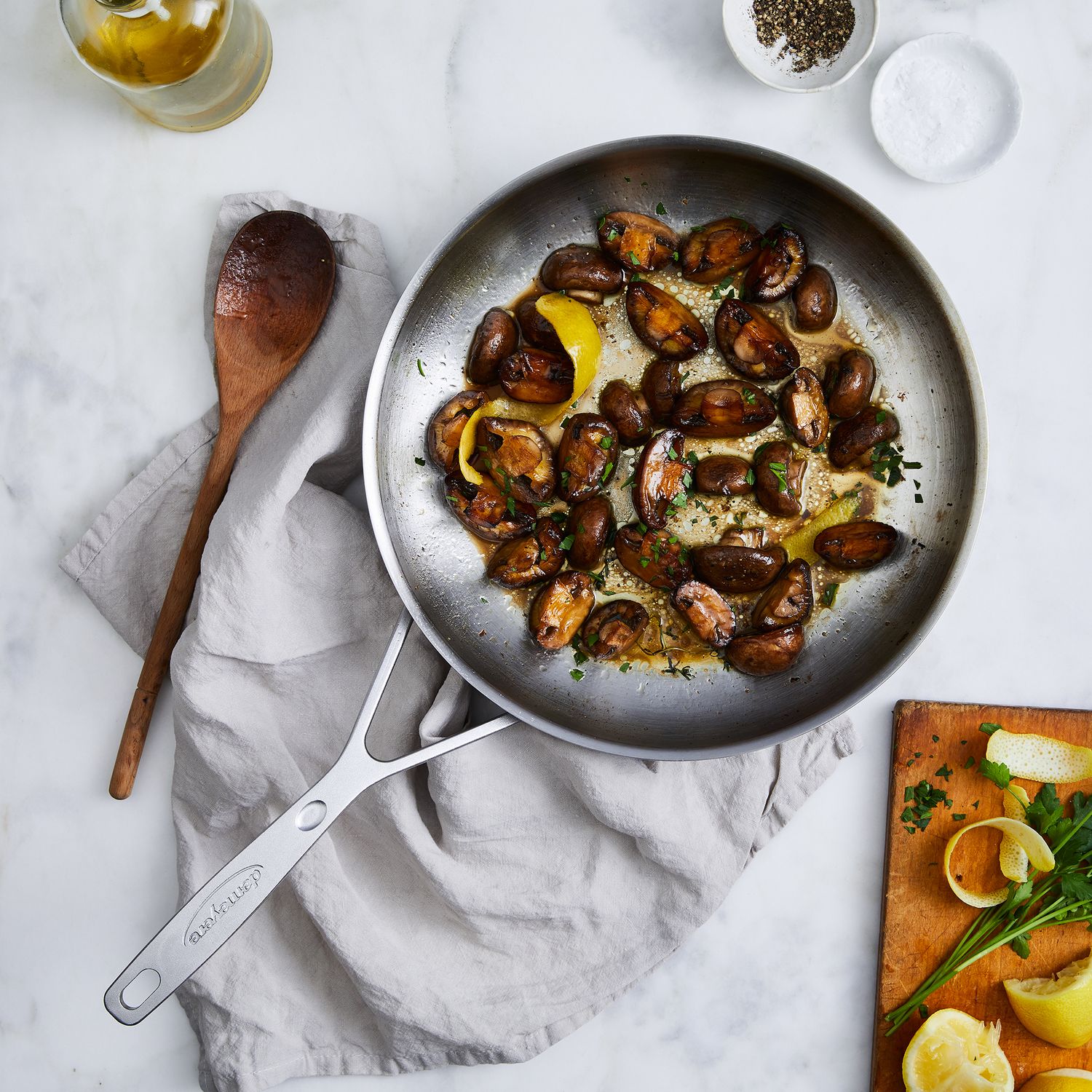
Pros:
- Nonreactive: Stainless steel is nonreactive and does not leach harmful chemicals or flavors into food, making it a safe choice for cooking a wide range of dishes.
- Durable: Stainless steel frying pans are resistant to scratches, dents, and corrosion, ensuring long-lasting performance.
- Easy to Clean: Stainless steel is easy to clean and dishwasher safe, making it ideal for everyday cooking.
Cons:
- Poor Heat Conductivity: Stainless steel has relatively poor heat conductivity, leading to uneven cooking and hot spots if not properly preheated.
- Food Stickiness: Without proper seasoning or the addition of oil or fat, food may stick to stainless steel pans, requiring extra effort to clean.
- Higher Price Point: High-quality stainless steel frying pans can be more expensive compared to other options, making them less accessible to budget-conscious consumers.
Ceramic Coatings
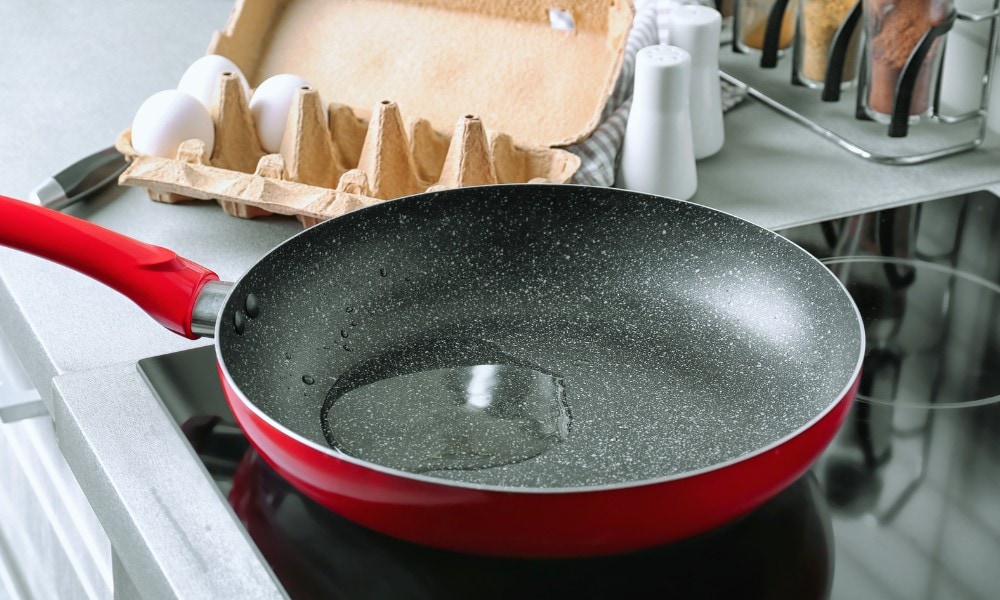
Pros:
- Nonstick Properties: Ceramic-coated frying pans offer nonstick cooking surfaces without the use of harmful chemicals like PFAS or PTFE.
- Easy to Clean: Ceramic coatings are easy to clean and require minimal effort to maintain.
- Variety of Styles: Ceramic-coated pans come in a variety of colors and designs, allowing for customization to match kitchen decor.
Cons:
- Durability Concerns: The durability of ceramic coatings can vary depending on the quality of the product and how it is cared for. Some coatings may chip or wear off over time.
- Limited High-Temperature Use: Ceramic coatings may not withstand high temperatures as well as other materials, leading to potential damage if exposed to excessive heat.
- Potential for Nanoparticles: Some ceramic coatings may contain nanoparticles, which raise concerns about their safety and potential health risks.
Carbon Steel
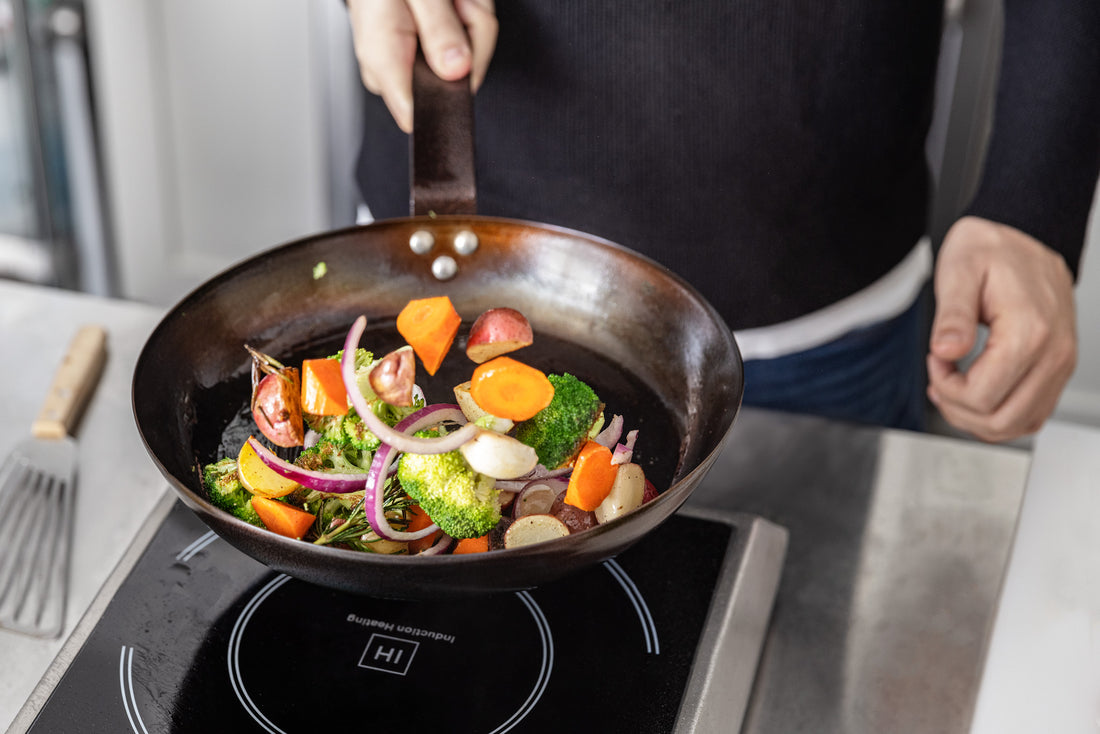
Pros:
- Lightweight: Carbon steel frying pans are lightweight and easy to handle, making them suitable for everyday cooking tasks.
- Excellent Heat Conductivity: Carbon steel has excellent heat conductivity, ensuring even cooking and browning of food.
- Nonstick Properties: When properly seasoned, carbon steel develops a natural nonstick surface, reducing the need for added oil or fat.
Cons:
- Requires Seasoning: Like cast iron, carbon steel pans require seasoning to maintain their nonstick properties and prevent rusting.
- Prone to Rust: Carbon steel pans are susceptible to rust if not properly cared for, requiring regular maintenance to ensure longevity.
- Reactivity: Carbon steel can react with acidic foods, affecting the taste and appearance of dishes if not properly seasoned or maintained.
Copper
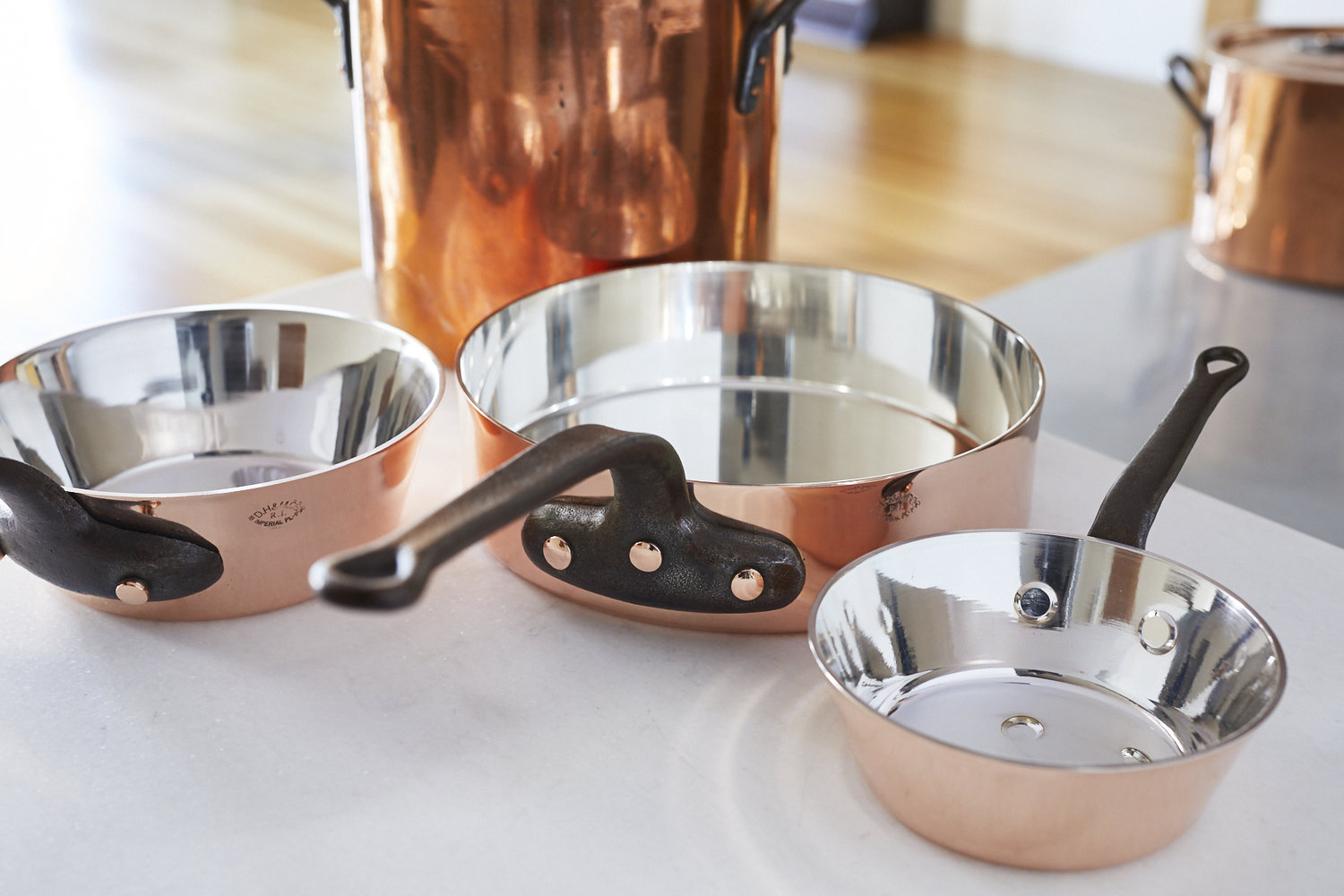
Pros:
- Superior Heat Conductivity: Copper frying pans offer superior heat conductivity, ensuring precise temperature control and even cooking.
- Attractive Appearance: Copper pans have an elegant and timeless appearance, making them suitable for both cooking and serving.
- Quick Heat Regulation: Copper pans heat up and cool down quickly, allowing for precise temperature adjustments during cooking.
Cons:
- High Cost: Copper frying pans are typically more expensive than other options due to the cost of materials and craftsmanship.
- Requires Polishing: Copper pans require regular polishing to maintain their appearance and prevent tarnishing.
- Limited Compatibility: Copper pans may not be compatible with induction cooktops without an additional layer of magnetic material, limiting their versatility.
Glass

Pros:
- Nonreactive: Glass frying pans are nonreactive and do not leach harmful chemicals or flavors into food, making them a safe choice for cooking a wide range of dishes.
- Easy to Clean: Glass is easy to clean and dishwasher safe, making it ideal for everyday cooking.
- Transparent: Glass allows for easy monitoring of food as it cooks, ensuring precise cooking results.
Cons:
- Fragility: Glass frying pans are more prone to breakage or shattering if dropped or exposed to sudden temperature changes, requiring careful handling.
- Limited Availability: Glass cookware options may be limited compared to other materials, making it challenging to find specific sizes or styles.
- Heat Retention: Glass frying pans may not retain heat as well as metal pans, requiring adjustments to cooking times and temperatures.
Conclusion
When it comes to selecting a frying pan for healthier cooking, there isn’t a one-size-fits-all solution. Each type of pan has its advantages and disadvantages, and the best choice depends on your cooking preferences, dietary needs, and budget.
For those seeking a durable and versatile option, cast iron and stainless steel frying pans are excellent choices. They require some maintenance but offer long-term benefits for health-conscious cooks.
If nonstick convenience is a priority, ceramic-coated frying pans provide a safer alternative to traditional nonstick pans with PFAS coatings. However, it’s essential to choose high-quality brands to ensure durability and safety.
Ultimately, the key to healthy cooking lies in using high-quality ingredients and cooking methods that preserve nutrients and minimize exposure to harmful substances. By carefully selecting the right frying pan for your needs, you can enjoy delicious and nutritious meals while prioritizing your health and well-being.

